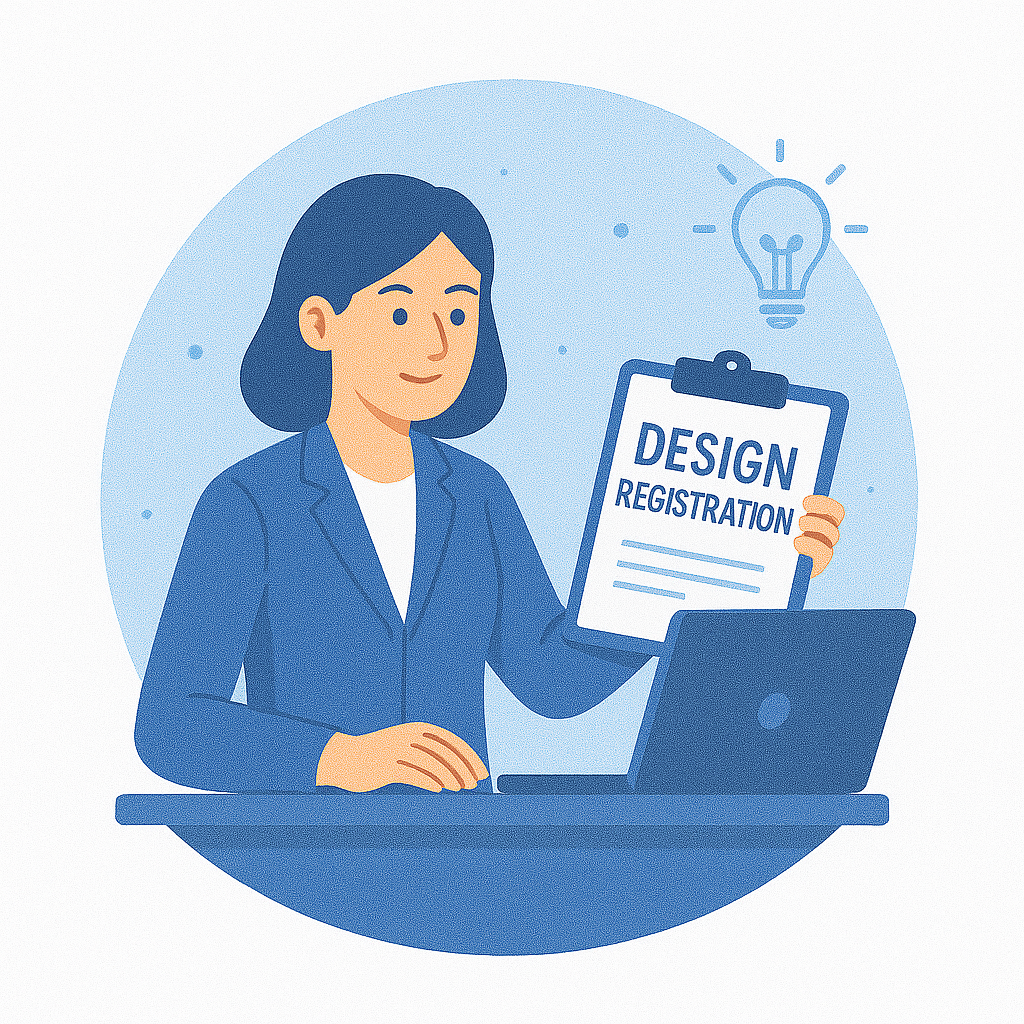
Design Registration
Design registration protects the visual appearance of a product — its shape, configuration, pattern or ornamentation. It secures exclusive rights and prevents unauthorized copying of your creative industrial designs.
Overview
What is a Design?
A design refers to the features of shape, configuration, pattern or ornamentation applied to an article by an industrial process. It must be new or original and not previously published or used in the country before the date of filing.
Why register a design?
Registration grants the proprietor exclusive rights to apply the design on the article and to prevent unauthorized copying. It adds commercial value, helps in product differentiation and provides legal remedy against infringers.
Scope & Examples
Design registration commonly applies to consumer products, furniture, electronic device casings, fashion items, packaging and industrial components where appearance matters.
Note
Design registration does not protect technical function or mechanism — those are protectable by patents. It protects the visual aspect only.
Essential Requirements
Key eligibility criteria under the Designs Act, 2000
New & Original
Design must be novel and not previously published or used in the country.
Aesthetic Appeal
Design should relate to appearance — shape, pattern, configuration or ornamentation.
Applied to an Article
Design must be applied or applicable to any article by an industrial process.
Not Functional
Purely functional features are not protectable as designs (patent may be appropriate).
Procedure
High-level steps for registration of designs
Prepare Application
Prepare Form-1 with representation (views) of the design, article description and applicant details.
File Application
File online at the Controller General of Patents, Designs & Trade Marks (or physically as per rules).
Examination
The application is examined for novelty and formal compliance; objections (if any) are communicated.
Hearing / Reply
If objections raised, submit reply or attend hearing within prescribed time to defend the design.
Acceptance & Registration
If accepted, the design is registered and certificate issued. Registration is then published in the Designs Journal.
Maintenance / Renewals
Maintain the design and pay renewal fees as per statutory schedule to keep protection in force.
Documents Required
Typical documents and materials submitted with the application
Representation of Design
Clear drawings/photos of the design (front, back, side views) showing the features to be protected.
Application Form
Completed Form-1 with applicant details and article description.
Applicant Identity Proof
KYC documents (PAN/Aadhaar/Certificate of Incorporation etc.).
Power of Attorney
If filed by an agent/attorney, signed POA as required.
FAQs on Design Registration
If you can't find an answer, reach out to contact@harshdeepnarula.in
Design refers to features of shape, configuration, pattern or ornament applied to an article by any industrial process.
Design must be new or original and not previously published in India; it should relate to the appearance of an article.
Processing time varies; typically months depending on examination, objections and hearings.
Yes, if the design is applied to an article and meets novelty/other requirements, such items can be registered.
Design protection is available for initial term under the Act and may be renewed as per statutory provisions — check current rules for exact periods.
Not mandatory — the design should be applicable to an article by an industrial process; the article need not be in production at filing.
Ready to register your design?
Our team assists with drafting representations, filing applications, responding to objections and securing registration — end-to-end.